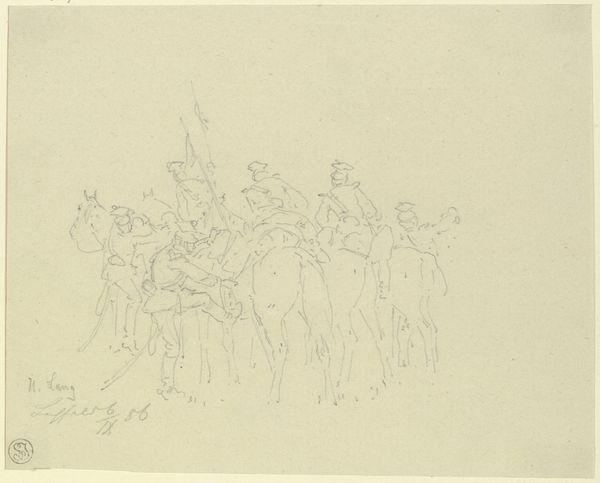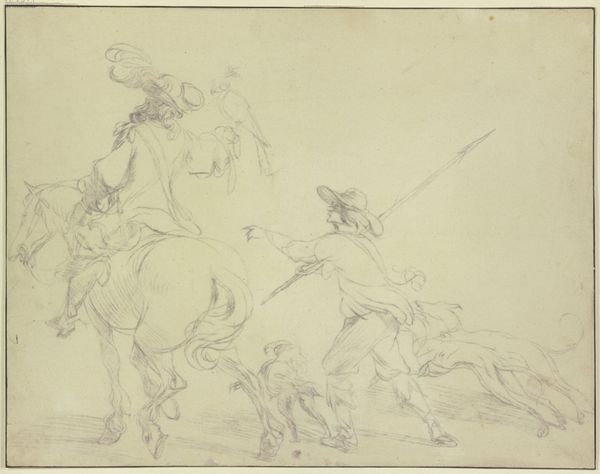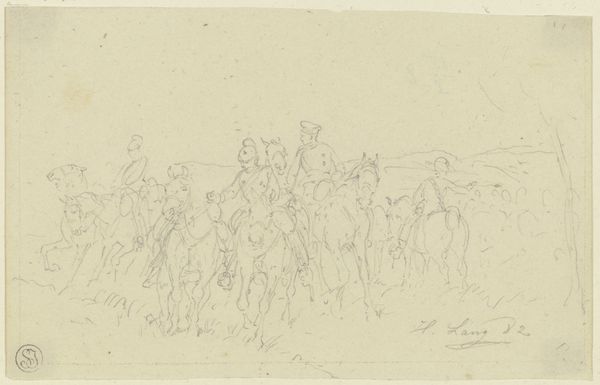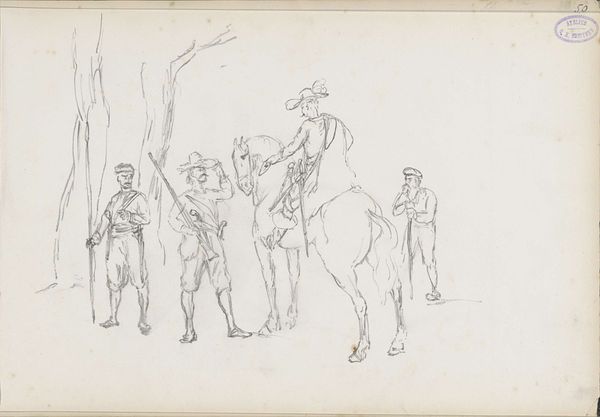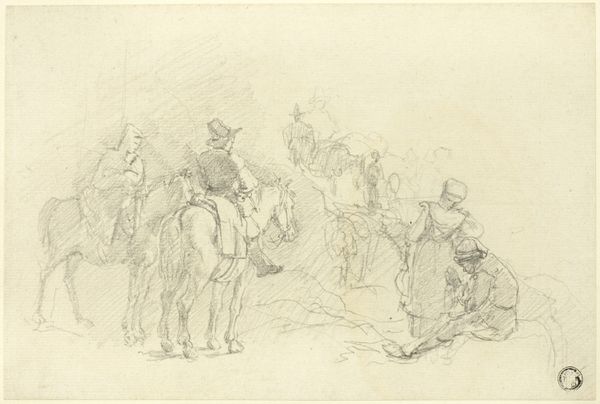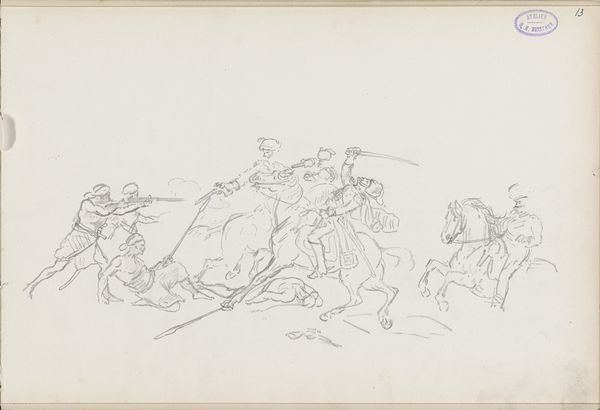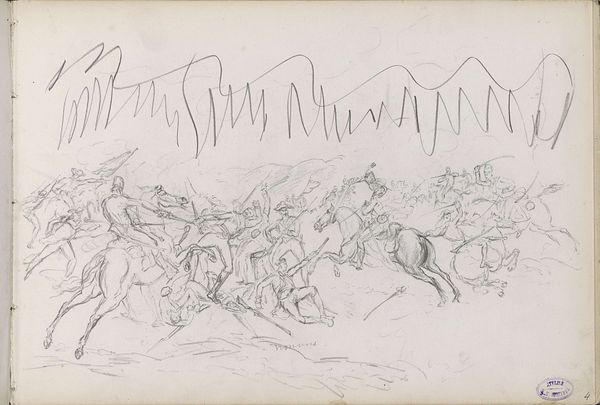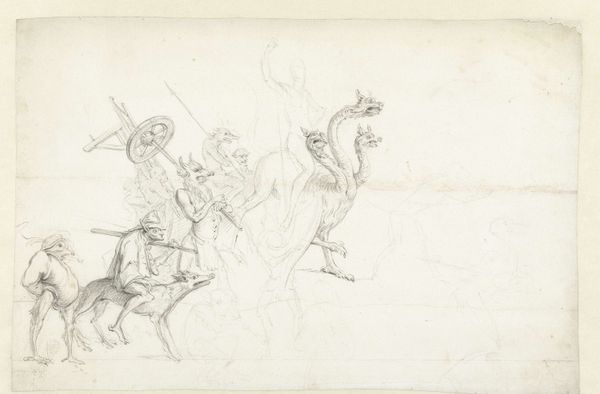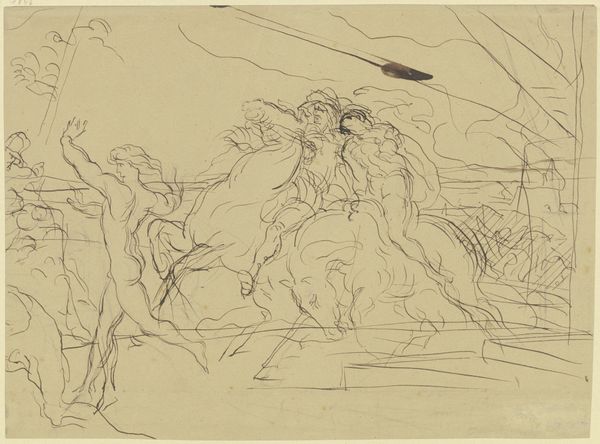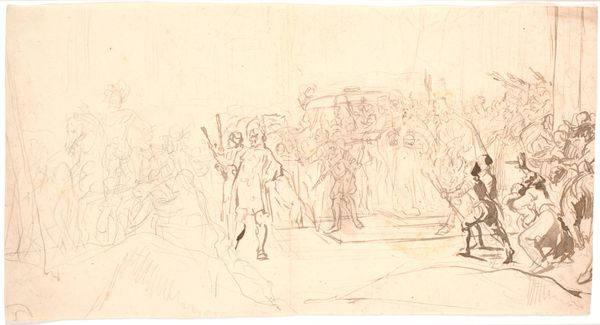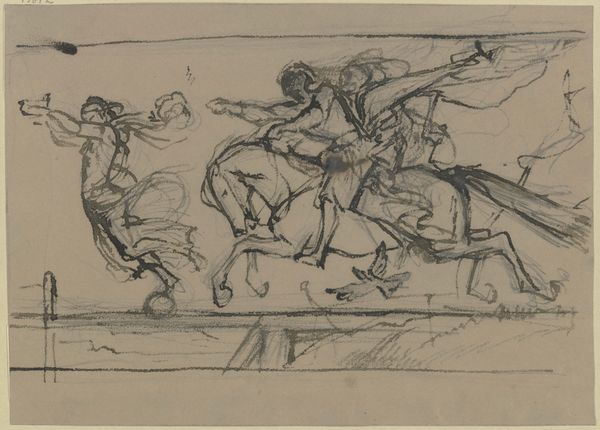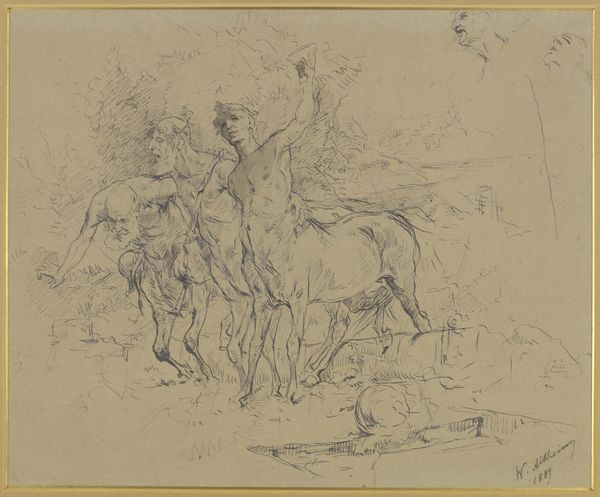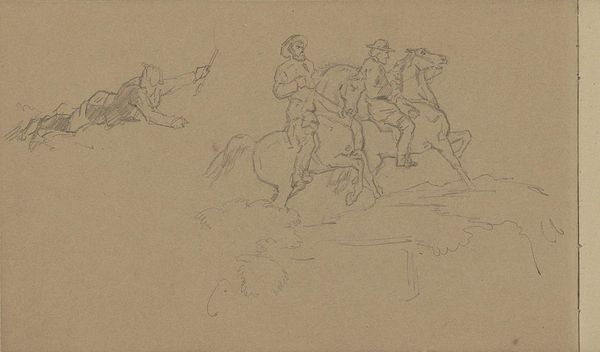
To skitser. T.v. en blyantsskitse med heste og to mænd. T.h. en rødkridtsskitse med en figurgruppe 1746 - 1828
0:00
0:00
Dimensions: 196 mm (height) x 264 mm (width) (bladmaal)
Curator: Let’s consider this intriguing double sketch by C.A. Lorentzen, dating from the late 18th to early 19th century. It's housed here at the SMK, Statens Museum for Kunst. On the left, we have a pencil sketch of men with horses, and on the right, a red chalk sketch depicting a group of figures. Editor: It's interesting how the eye is immediately drawn to the left side; the figures and horses feel more grounded, somehow. The red chalk sketch seems almost spectral, a flurry of bodies. Curator: Absolutely. Given Lorentzen’s engagement with historical and allegorical subjects, it begs the question—what narrative underpins these compositions? The horse traditionally represents power and nobility. Are we witnessing the dawn of an aristocratic revolution or simply an ode to man and animal in working life? Editor: The sketches hint at both those possibilities, don't they? And from a materialist perspective, the decision to use pencil on one side, and chalk on the other, it suggests perhaps two separate avenues of study, doesn’t it? Pencil, for precision; chalk, for expressive, preliminary form-finding. We can feel the artist at work. Curator: That delineation is striking. It underscores Lorentzen’s technical versatility. The composition is so dynamic, inviting considerations of class, masculinity and modes of representation. We could discuss this within the larger political shift in Europe in that era, thinking about the legacy of the Enlightenment. Editor: Right. And when you look at how those figures on the left are so deliberately attending to the animals. It humanizes labor, elevates craft, and dignifies a necessary aspect of that era’s material existence, if we are also situating that narrative in the context of class and politics, as well as just a historical moment. Curator: The Romantic spirit infuses the drama of each sketch and invites speculation regarding Lorentzen’s world. The two separate figures, the horse attendants, but in red chalk we see figures clustered, almost battling in motion. How does that speak to ideas around revolution and class consciousness that shaped society at this moment? Editor: What fascinates me most is the connection forged between raw material, artist’s labor, and society. Here's a humble piece of paper transformed into both meticulous rendering, but also very passionate studies. It brings the viewer intimately closer to the past’s reality of production, if only fleetingly so. Curator: Indeed, by studying Lorentzen’s sketches through a materialist lens we unlock avenues to understanding its creation in the social world, whilst considering the sketches as artistic achievements. Editor: Agreed. A beautiful meeting of worlds.
Comments
No comments
Be the first to comment and join the conversation on the ultimate creative platform.
